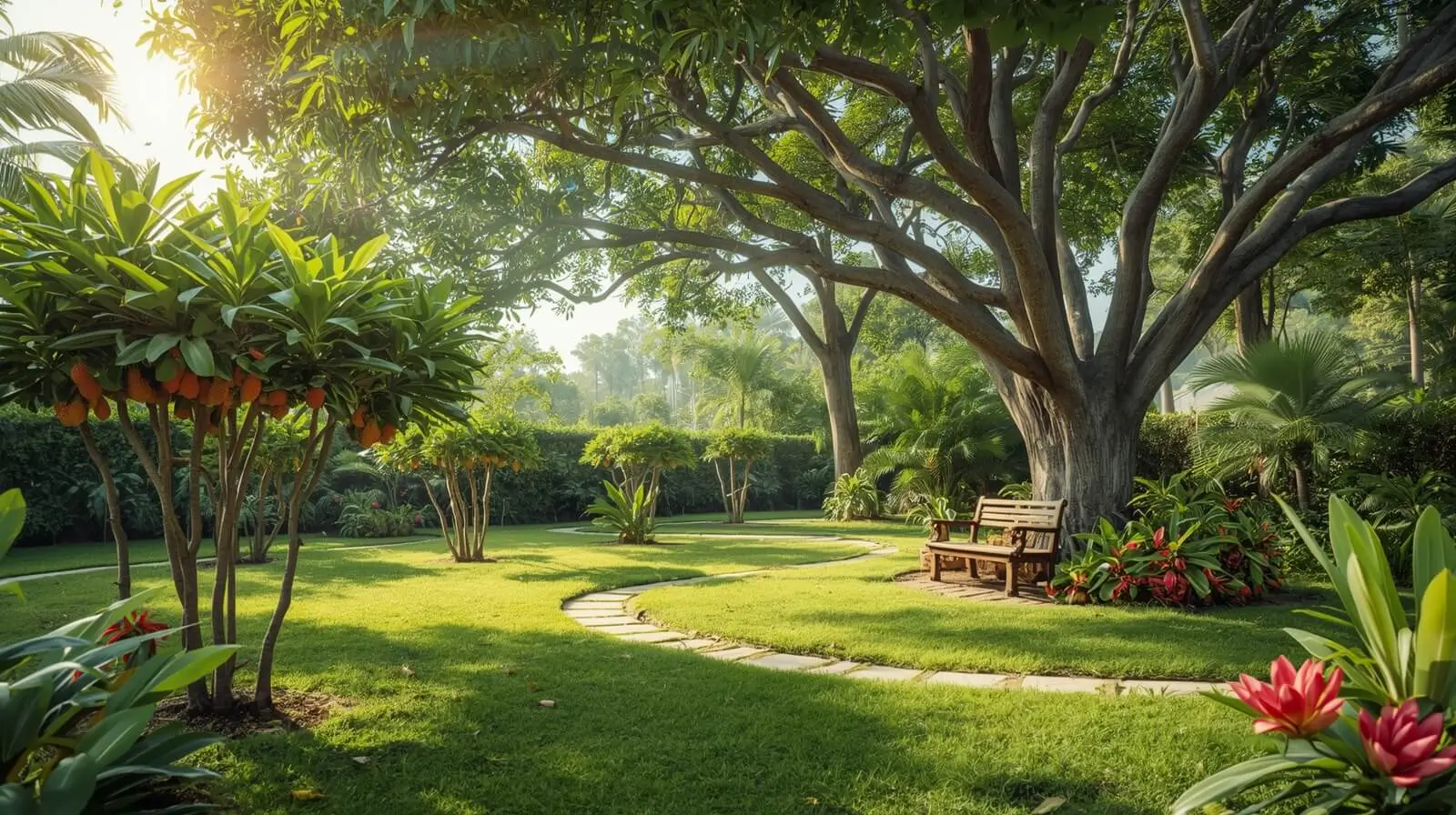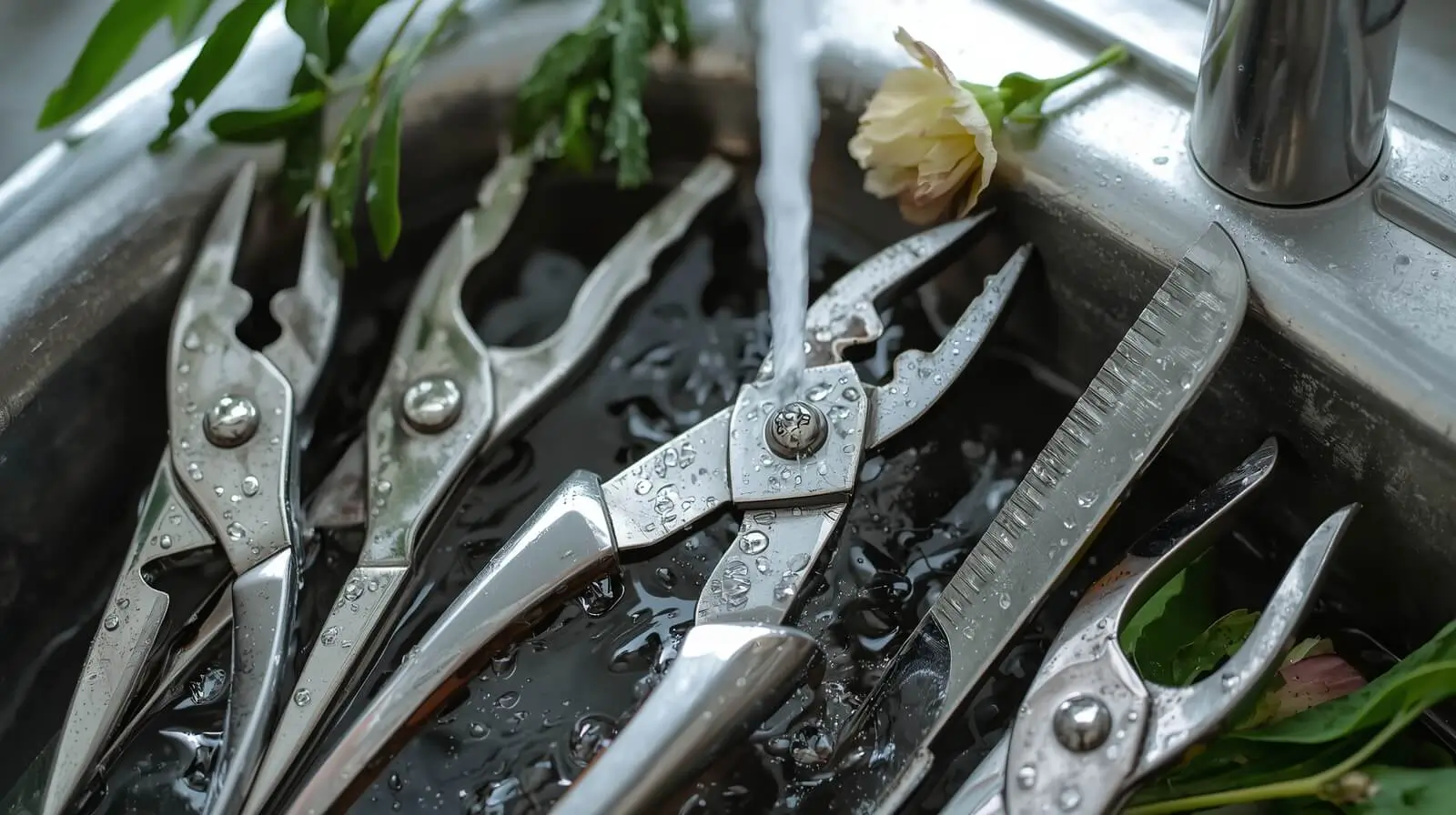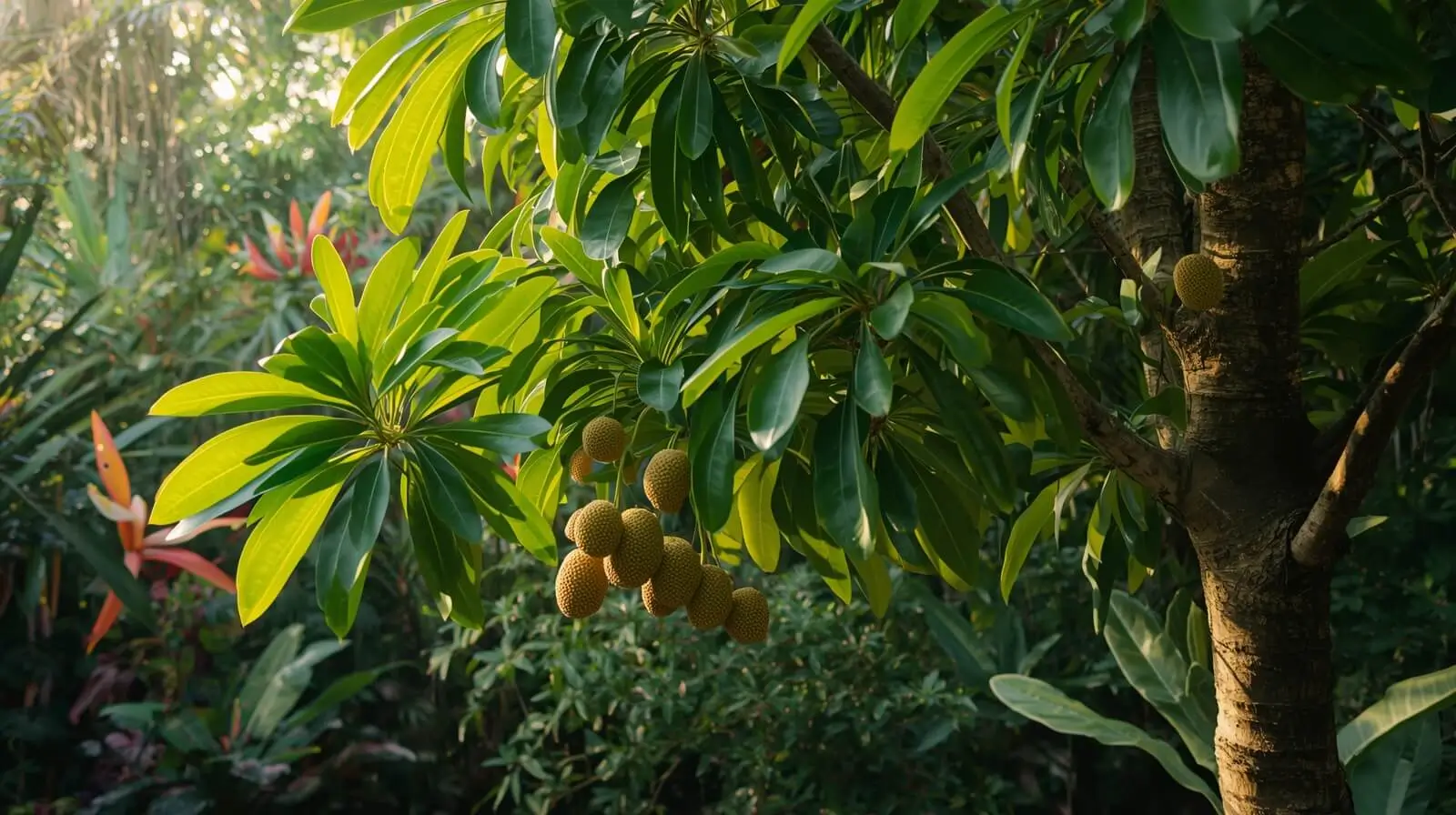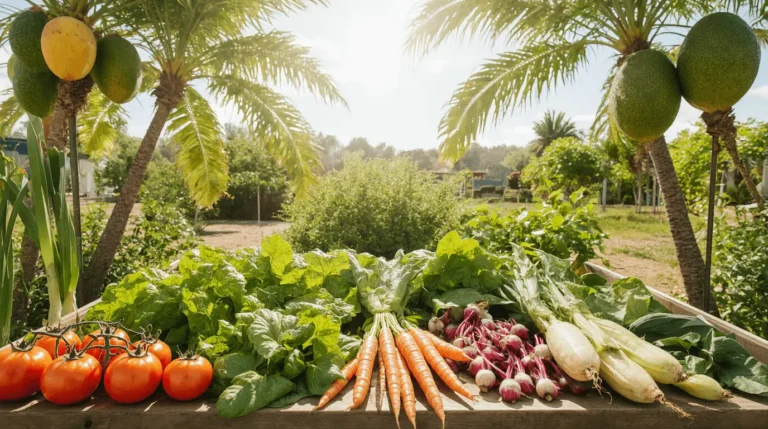When I talk with enthusiasts who grapple with gardening challenges, I often hear how pests—especially the elusive lychee erinose mite—become a tiny menace that can wreak havoc on trees, sometimes leading to significant yield losses and a compromised plant’s health. I’ve faced these pests myself in my tropical fruit plants, and I remember the mix of frustration and hope that pushed me to look for effective lychee erinose mite treatment strategies. What helped me most was learning how to navigate the complexities of pest management, ensuring the vitality of my garden while still keeping things sustainable. This article unveils how even nine simple but powerful steps for combating mites can be surprisingly empowering, helping you cultivate more thriving, resilient gardens instead of feeling alone in the struggle.
In my own rewarding yet challenging journey, I began exploring a variety of methods such as Chemical, Biological, and Cultural practices, each offering a different angle of support for my lychee plants. For instance, treatments like abamectin and the beneficial fungus Hirsutella thompsonii made a significant difference, especially once I paired them with preventative measures such as good sanitation, adequate spacing, ongoing education, and simple habits that foster a healthier environment. I often imagine how satisfying it is for gardeners to watch their trees thrive, free from the worry of future infestations. Even a small step you take today contributes to a stronger ecosystem, giving your garden a more vibrant look while keeping your plants easier to nurture.
To better understand how lychee trees grow and respond to climate conditions, you can also explore this detailed guide on lychee tree zone tips, which complements these mite-treatment methods perfectly.

When I embark on work in my own yard, I always remember insights from my past and enjoy sharing those experiences with the supportive gardening community. I learned that simply implementing actionable ways to protect your gardens allows you to enjoy healthier fruits with far less labor, and seeing your plants grow feels like watching your garden truly thrive—or even thrives, as some like to say. Over time, the more we learn, cultivate, and exchange insights, the easier it becomes to reduce losses, promote balance, and target problems before they grow. By doing this together, we strengthen our shared gardening journey and build gardens that stay strong, bright, and full of life.
Abamectin: A Chemical Control for Lychee Erinose Mite
When I first started gardening, I realized that dealing with pests like the lychee erinose mite can feel like a real challenge, especially for gardeners facing stubborn infestations. Over time, I learned how Abamectin, a highly effective acaricide developed as a targeted treatment, becomes a strong solution when used with care. This chemical works by interfering with the pest’s nervous systems, leading to paralysis and ultimately death, helping you achieve better results when you apply it at the onset of an infestation. In my own journey, I always remind myself to stay informed, adapting my approach and giving full attention to comprehensive coverage, especially the undersides of leaves where mites hide. Regular applications may be necessary to maintain control, particularly during peak periods, and I’ve seen how this supports a more thriving garden while protecting the health of the plants I care for.
While research in Florida still indicates that Abamectin can struggle to penetrate the galls created by erinea, it still shows promise when combining it with other management strategies. I’ve had good success using horticultural oils and surfactants to enhance the overall effectiveness, especially within the realm of local agriculture where pesticides remain a common practice. Through continuous assessments, I try to determine the best methods for controlling pests on my fruit, and I always remember that I’m not alone in this process. When I navigate these steps and explore the best practices, I notice how each effort helps me create a more resilient space. By staying informed, making vital choices, and managing challenges thoughtfully, I find myself building a garden that feels both steady and rewarding—one where every adjustment contributes to a healthier landscape.
For scientifically backed recommendations, you can review this University of Hawai‘i research document on lychee erinose mite control, which explains successful treatment results and integrated management practices.
Cultural Practices: Enhancing Plant Health to Prevent Mite Infestations
When I work on Caring for my lychee trees, I’ve learned that keeping their health strong is essential for managing pests like the erinose mite without relying only on treatment. By creating a more thriving garden environment, simple nurturing strategies can make an effective difference. I like to implement Proper watering, balanced fertilization, and gentle pruning techniques to begin enhancing the vitality of my plants. It’s important to avoid excessive nitrogen, since it can lead to dense growth that attracts more problems. Instead, I focus on maintaining ideal moisture levels through precise methods like Drip irrigation, which helps reduce excess water on leaves and lowering the risk of pest multiplication. These small adjustments brought me steady results and made everyday care feel easier.
Furthermore, I found that ensuring sufficient air circulation around my trees is crucial, especially when applying appropriate spacing and practicing regular pruning to create spaces that feel less inviting to pests. Monitoring the soil and avoiding over-irrigation helps foster conditions where harmful insects cannot thrive. Understanding the habitat needs of each specific pest also makes it easier to cultivate a garden setting that naturally deters them. Over time, these caring practices began to boost my garden’s strength and contribute to a more resilient ecosystem. I’ve come to Embrace the process, finding real joy in watching everything flourish, turning the space into a vibrant home for both plants and the gardeners who tend to them.
Hirsutella thompsonii: A Biological Control Agent for Lychee Erinose Mite
In my own gardening journey, I’ve come to see Hirsutella thompsonii as a truly remarkable fungal ally, especially when dealing with lychee erinose mite problems that often need careful treatment. Its effectiveness as a natural solution is well known, and the way it targets and eliminates pests makes it a comforting alternative to harsh chemical pesticides. To achieve better results, it’s important to apply it during periods of high humidity, when pest populations tend to thrive. I’ve watched this method work beautifully as it significantly reduces numbers, creating a healthier garden ecosystem and lessening the reliance on synthetic chemicals. Embracing such biological control methods often aligns beautifully with sustainable gardening practices that truly nurtures both plants and people. It also contributes to environmental conservation, something many of us care about deeply, especially when incorporating organic insect management techniques similar to those used on passion fruit vines, helping enhance the vitality of tropical crops like soursop.
Here in Florida, I’ve noticed how gardening enthusiasts are increasingly turning toward eco-friendly solutions, and the adoption of these practices continues to show promising results. Recent studies keep revealing how effectively such approaches can help manage and maintain improving overall health in home landscapes. When I first considered using biological tools, I didn’t expect how much it would transform the way I cultivate a thriving garden space that meets both plant and gardener needs. Watching how these natural tools nurtures the environment is something I genuinely cherish, especially as each choice we make adds to a deeper sense of stewardship.
Regular Monitoring: Scouting for Early Detection of Lychee Erinose Mite
In my own garden, I’ve learned that Consistently observing lychee plants is truly crucial for spotting the erinose mite early, especially before it requires heavier treatment. Many gardeners share the same feeling of understanding how concerning a pest issue can be, especially when infestations spread quickly. I developed a habit to inspect the foliage thoroughly, particularly the undersides of leaves, where you often notice subtle signs of trouble, like distorted growth or reddish-brown galls. By establishing a regular scouting schedule during the growing season, I’m able to catch problems before they become serious. This proactive approach allows for timely interventions that minimize potential harm to the plants I consider truly beloved.
I also rely on advice from Experts who recommend combining visual inspections with simple traps that help capture and assess populations more accurately. By incorporating these practical methods into my gardening routine, I’ve been able to effectively manage LEM, keep my fruit trees healthy, and stay alert in a way that feels natural. I always Remember that I’m not alone in this journey—we’re all nurturing our gardens with the same love, care, and careful attention, simply trying to give each plant the best chance to thrive.
Horticultural Oils: Effective Treatment for Lychee Erinose Mite Control
In my own garden experience, I found that using Horticultural oils became a truly compassionate remedy for managing lychee erinose mite problems, especially when I needed a treatment that worked effectively by suffocating pests and disrupting their life cycle. To ensure the best results, these oils must be lovingly applied during the cooler parts of the day to prevent leaf burn, and it’s essential to achieve complete coverage of the foliage, including the undersides of leaves where small insects hide. Regular applications are crucial, especially at peak activity periods, to maintain effective control over infestations. Here in Florida, many gardeners have embraced the use of oils after seeing numerous reports of significant improvements in insect management, and by following optimal methods like cultural practices, removing and incinerating infested branches, we can efficiently protect our fruit plants and enhance overall yield. When considering growing soursop, I always remember to choose a well-drained location that basks in ample sunlight, and to Ensure proper spacing to promote air circulation, because Implementing organic pest techniques helps nurture the health of the garden and create a thriving space filled with joy and abundance.
- Horticultural oils must be applied thoughtfully, ensuring complete coverage, proper timing during cooler parts, and Regular applications to maintain effective control and reduce infestations.
- Combine cultural practices, organic pest techniques, and efficient management methods like removing, spacing, air circulation, and protecting fruit plants to support overall yield, plant health, and a thriving garden.
By following these steps with care, I’ve seen how even the simplest adjustments—like ensuring a well-drained location, using optimal methods, and keeping the garden nurture-focused—can help gardeners maintain a healthier space. The more we embraced these habits, the more our gardens began to create balance, enhance vitality, and naturally support that feeling of abundance we all love seeing in our plants.
Proper Spacing: Reducing Mite Infestation Risks through Airflow Management
In my own garden, I learned how Spacing my lychee plants adequately is more than a technical requirement—it’s a true nurturing practice that can significantly minimize the risk of pest infestations. By allowing sufficient space around each plant, you naturally enhance airflow, which helps reduce humidity levels and creates conditions less favorable for pests. This simple habit of creating a healthier environment keeps your plants stronger and more balanced. I’ve noticed that when my garden wasn’t overcrowded, the plants didn’t have to face competition for essential resources like sunlight and nutrients, which encourages steady growth and keeps them more resilient against insect attacks.

As I tend to my plants daily, I often think about how much they benefit from this thoughtful care. Just giving them room to breathe goes a long way in preventing stress and supporting their well-being. There’s always a moment when you pause and assess your garden layout, and you start to consider how spacing choices create a more supportive setting. Over time, these small adjustments help a garden become truly thriving, and every plant soon feels like a beloved part of the space you’ve grown with intention.
Resistant Varieties: Choosing Lychee Trees Less Susceptible to Mites
When I began Selecting the right varieties of fruit trees for my garden, I realized how important resistance to erinose pests can be. It became a vital step in choosing an effective approach for lychee mite treatment, and I found that options like Mauritius and Brewster were truly resilient. In some areas, this pest can even cause an 80% yield reduction, a harsh reality that highlights the importance of choosing resistant plants. Whenever I choose new plants, I make a habit of asking about their vulnerability, so I can prioritize varieties developed to withstand infestations. This thoughtful habit reduces my reliance on chemical treatments and instead nurtures a healthier garden ecosystem built on long-term strength and balance. It also helps me make more excellent choices for my gardens, especially when necessary decisions need clarity.
Many experienced cultivators often share success stories that underscore the real efficiency of planting these strong varieties. For instance, gardeners who planted Mauritius often report improved harvests and better overall yields, which only reinforces the significance of picking pest-resistant options. When I’m focusing on how to better cultivate a flourishing garden, these choices make the whole process feel more natural, even easing some of the daily challenges posed by the need for regular treatment. I always Remember how even a small shift in the way I approach gardening can shape the whole journey, and each choice contributes to a more vibrant, productive space. As gardeners, we learn to embrace these lessons and grow together, building gardens that feel resilient and rewarding.
Sanitation Practices: Preventing the Spread of Lychee Erinose Mite
In my own garden, I’ve learned that Caring for plants goes far beyond watering and pruning—especially when dealing with lychee erinose mite problems. To protect them from pests, I started applying more efficient sanitation methods, and I quickly noticed how these habits help slow the spread of infestations. By Regularly eliminating and discarding infested leaves, debris, and anything affected, you take a crucial step toward keeping your plants healthy. I always make sure my cleaning tools and equipment are well washed after working in different areas so I can prevent the accidental transfer of mites to other trees. Research shows that maintaining a clean environment can significantly reduce the likelihood of further infestations, and this alone can enhance your pest management efforts more than you might expect.

As a gardener who truly cares, I often remember how even adult insects are more vulnerable to poor hygiene than pupae, which highlights the necessity of cleanliness in every corner of my green space. When I started strive for a more thriving setting, I saw fewer harmful organisms causing damage to crops, something that’s becoming a concern worldwide. By implementing successful strategies that promote overall plant health, I found that embrace-worthy habits turn into an essential daily practice. These routines ensure a stronger, more comprehensive crop care system that keeps my gardens able to flourish and thrive, improving both the plants and the gardener who tends them deeply.
Read Also:
- Gardening & Plant Care Guide for Thriving Plants
- Tropical Fruit Trees: Grow Exotic Paradise at Home (Guide)
Conclusion

Keeping your garden clean and well-maintained is one of the most powerful ways to stop the lychee erinose mite from spreading. With consistent sanitation practices, such as removing infested leaves, washing tools, and clearing debris, you greatly reduce the chances of pests moving from one plant to another. These simple habits support plant health, strengthen your garden environment, and help you manage pests without relying heavily on chemicals. When you care for your space with intention, every plant benefits — and over time, you build a thriving, resilient garden that rewards all your effort.
FAQs
1. Why is sanitation important for preventing lychee erinose mite infestations?
Sanitation removes infested leaves, debris, and hidden pests, making it harder for mites to spread. Clean tools and equipment also prevent accidental transfer between plants.
2. How often should I clean my garden to control mites?
A quick check every few days works well. Remove infested material immediately and clean your tools after each use in affected areas.
3. Can sanitation alone stop lychee erinose mites?
Sanitation is powerful, but it works best when combined with other methods like horticultural oils, resistant varieties, and proper spacing.
4. Should I remove only damaged leaves or whole branches?
If the infestation is light, removing leaves is enough. For heavy damage, removing entire branches helps protect the rest of the tree.
5. Does sanitation help other pests too?
Yes! Good garden hygiene reduces the spread of insects, fungi, and bacterial issues — improving the overall health of your garden.
6. Can mites spread through tools and hands?
Absolutely. Mites can cling to tools, gloves, and clothing. Always clean tools and wash hands after working with infested plants.
7. Is sanitation still needed if I use chemical or organic treatments?
Yes. Sanitation strengthens any treatment you use and lowers the chance of reinfestation.
8. How do I know if my lychee tree is infested?
Look for distorted new leaves, fuzzy brown patches (erinea), reddish galls, and slow or unusual growth.
9. Will sanitation help my yields?
Definitely. By stopping the spread early, you protect developing fruit and improve your long-term harvest quality.
10. Is sanitation suitable for beginner gardeners?
Yes — it’s simple, safe, and one of the easiest ways to protect your plants. Even small habits make a huge difference.




